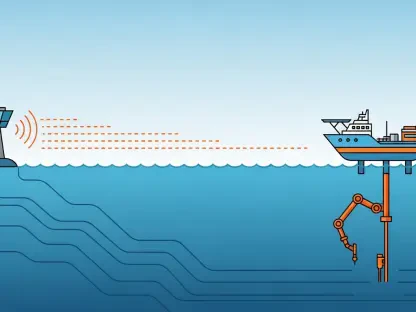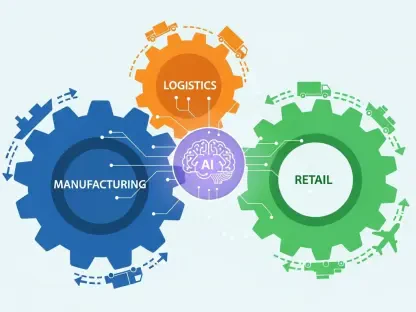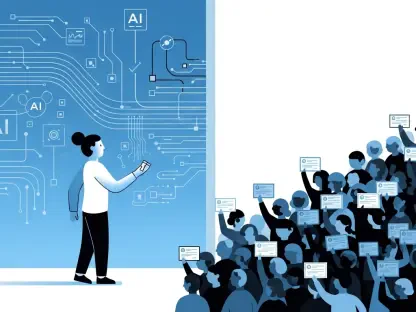This guide aims to provide a detailed roadmap for understanding and potentially replicating the multi-layered AI safety strategies employed by Anthropic for their AI model, Claude. It is designed to help developers, policymakers, and AI enthusiasts grasp the importance of embedding safety at every stage of AI development and deployment. By breaking down Anthropic’s comprehensive approach, this guide offers actionable insights into crafting robust safety mechanisms that balance innovation with ethical responsibility, ensuring AI systems remain helpful while minimizing harm in a complex digital landscape.
The purpose of this guide is to illuminate the critical need for safety in AI systems amid rapid technological advancements. As AI becomes increasingly integrated into daily life, from healthcare to education, the risks of misuse or unintended consequences grow exponentially. Anthropic’s pioneering work with Claude serves as a benchmark for addressing these challenges, offering a blueprint that prioritizes trust and accountability. This resource will walk through each layer of their strategy, providing a clear framework for those looking to implement or advocate for responsible AI practices in their own projects or organizations.
Moreover, this guide underscores the broader societal implications of unchecked AI deployment. With public and regulatory scrutiny on the rise, ensuring safety is not just a technical necessity but also a cornerstone of maintaining user confidence. By exploring Anthropic’s methods, readers will gain a deeper appreciation for how proactive measures can mitigate risks while fostering innovation. The following sections will detail specific steps to emulate this model, ensuring a thorough understanding of how safety can be woven into the fabric of AI development.
Why AI Safety Matters: Setting the Context
Before diving into the specifics, it’s essential to recognize the stakes involved in AI safety. The potential for AI to influence critical areas like elections, mental health support, and even national security highlights the urgency of robust safeguards. Anthropic has positioned itself as a leader in this arena by prioritizing ethical considerations over unchecked progress. This section frames the motivation behind their efforts, helping readers see the real-world impact of safety lapses and the value of a structured approach.
The growing complexity of AI systems demands a proactive stance to prevent harm. Issues such as bias, misinformation, and exploitation by malicious actors are not hypothetical but documented challenges in the industry. Anthropic’s mission to address these concerns head-on reflects a broader industry trend toward accountability. For anyone involved in AI, understanding this context is the first step in appreciating the need for a multi-layered safety strategy that anticipates risks before they materialize.
Step-by-Step Instructions for Building a Multi-Layered AI Safety Strategy
Below are detailed, numbered steps inspired by Anthropic’s approach to ensuring Claude’s safety. Each step includes explanations and practical tips to help apply these principles in other AI projects, ensuring a comprehensive defense against potential harms.
Step 1: Develop a Comprehensive Usage Policy
Begin by crafting a clear and detailed usage policy that serves as the foundation for acceptable AI interactions. This policy should outline rules for critical areas such as child safety, election integrity, and responsible use in sensitive sectors like finance or healthcare. A well-defined policy acts as a rulebook, guiding both developers and users on the boundaries of AI application to prevent misuse.
To create an effective policy, consider employing a structured risk assessment tool similar to Anthropic’s Unified Harm Framework. This method evaluates potential harms across physical, psychological, economic, and societal dimensions, ensuring decisions are nuanced rather than based on rigid metrics. Engage diverse stakeholders during this process to capture a wide range of perspectives, which can help identify blind spots in the policy’s scope.
As a practical tip, regularly update the policy based on real-world feedback and emerging challenges. For instance, Anthropic’s collaboration with external organizations during significant events like elections demonstrates the importance of adaptability. Testing the policy through simulations or vulnerability assessments can also reveal weaknesses, allowing for timely refinements to address gaps in areas like data privacy or content moderation.
Step 2: Conduct Rigorous Policy Vulnerability Testing
Once the policy is in place, subject it to stress tests by involving external experts to probe for weaknesses. These vulnerability tests should focus on sensitive topics such as terrorism or child safety, attempting to exploit gaps in the AI’s responses. This step ensures that the policy isn’t just theoretical but can withstand real-world challenges.
Collaboration with specialists who understand specific risks can provide invaluable insights during testing. Their expertise helps simulate sophisticated misuse scenarios, ensuring the AI’s responses align with ethical guidelines under pressure. Documenting and analyzing test results is crucial for identifying patterns or recurring issues that need addressing.
A key tip here is to maintain an iterative approach. After each round of testing, refine the policy and AI behavior based on findings, ensuring continuous improvement. This proactive stance mirrors Anthropic’s method of anticipating risks before they become widespread, fostering a culture of preparedness in AI safety management.
Step 3: Embed Safety in Training and Evaluation
Integrate safety principles into the AI’s core design during the training phase. Partner with organizations that specialize in sensitive areas, such as mental health or crisis support, to ensure the AI handles complex interactions with empathy and care. This step focuses on pre-deployment preparation to minimize risks from the outset.
Conduct comprehensive safety evaluations for each new version of the AI, testing adherence to guidelines across diverse scenarios. Include specialized risk assessments for high-stakes domains like cybersecurity or biological threats, often seeking input from government or industry experts. Additionally, perform bias evaluations to ensure fairness, checking for political or demographic skews that could undermine trust.
A practical tip is to maintain detailed records of evaluation outcomes to track progress over time. Use these insights to refine training datasets and algorithms, addressing any identified shortcomings. This thorough approach, akin to Anthropic’s pre-launch testing for Claude, ensures safety is a foundational element rather than an afterthought in AI development.
Step 4: Implement Real-Time Monitoring and Threat Detection
Post-deployment, establish systems for ongoing vigilance to catch and address issues as they arise. Deploy specialized AI models, often called classifiers, to detect policy violations in real-time, enabling immediate interventions like redirecting harmful responses or issuing warnings. This step ensures the AI remains safe in dynamic, live environments.
Analyze broader usage patterns using privacy-conscious tools to identify large-scale misuse, such as coordinated misinformation campaigns. Techniques like hierarchical summarization can help uncover trends without compromising user data. Simultaneously, engage in continuous threat hunting by monitoring online forums and other spaces where malicious actors might operate, staying ahead of emerging risks.
For best results, combine automated systems with human oversight to balance efficiency and nuanced judgment. Regularly update detection mechanisms to adapt to new threat patterns, ensuring the system evolves with the digital landscape. This dual approach reflects Anthropic’s commitment to maintaining safety long after initial deployment.
Final Reflections on Crafting AI Safety
Looking back, the steps taken to build a multi-layered AI safety strategy reveal the depth of commitment required to balance innovation with responsibility. Developing a usage policy sets clear boundaries, while vulnerability testing exposes critical gaps before they can be exploited. Embedding safety during training ensures ethical foundations, and real-time monitoring post-deployment addresses unforeseen challenges with agility.
Beyond these efforts, the journey highlights the importance of collaboration with external experts and stakeholders. Their insights enrich each phase, from policy crafting to threat detection, underscoring that AI safety is a shared endeavor. Moving forward, consider engaging with broader communities, including policymakers and researchers, to refine these strategies further and stay attuned to evolving risks.
As a next step, explore resources from industry leaders or ethical AI forums to deepen your understanding of emerging safety practices. Experiment with small-scale implementations of these steps in personal or organizational projects to test their effectiveness. By taking proactive measures and fostering dialogue, the path toward safer AI becomes a collective achievement, paving the way for technology that serves society responsibly.









